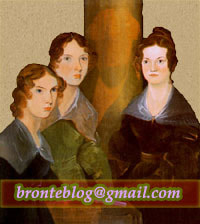It has an appeal, especially at first, but at some point, it starts becoming a little tiresome. For the live music aspect to really work, the songs have got to be great, not just passable. The repetitive refrain isn’t strong enough to function as the musical backbone of an almost three-hour show.
There is also a sense of trying too hard to be different. A self-consciously ‘edgy’ approach to the source material is evident throughout.
This extends to the set. The rollaway backdrops constantly moving around; chairs stacked high upon each other, in an off-kilter way, for no discernible reason (what’s with all the chairs in this production?); the appearance of puppets at one point for … well, apparently, just because.
But there are positives – and some moments are great. When the soundtrack reaches its apogee and Catherine (Stephanie Hockley) goes full rock goddess, with wind in her hair and a mic drop, it’s electrifying.
The cast are triple or even quadruple threats: all acting, dancing and singing, with T J Holmes (who plays Doctor Kenneth and the Moors) also playing the cello.
Nandi Bhebhe as Leader of the Moors is fantastic. With flawless acting, a powerful voice and huge charisma, she almost steals the show.
Archer as Lockwood/Edgar Linton/the Moors is another standout, especially for his physical dexterity; Robyn Sinclair excels as Frances Earnshaw/Young Cathy/the Moors; and John Leader has a gruff, brooding presence perfectly befitting the character of Heathcliff.
Wuthering Heights is a convoluted tale. Between this fact and the doubling or even tripling up of roles for the actors, this adaptation could easily become confusing. Rice addresses this by having them carry blackboards with character names written on them in chalk as they enter the show. Said blackboards are also used to proclaim deaths (and there are many deaths in Wuthering Heights).
It’s an effective device although whether it’s cringeworthy and a bit lazy or charming and quirky is up for debate.
In that way, the blackboards are a good metaphor for the show and its capacity to elicit very different responses (perhaps even within the same person).
At the end of the opening night performance, there were standing ovations, with some attendees applauding madly. But many remained down, clapping politely from their seats. Some sat with arms crossed after brief, perfunctory clapping, while a few walked out sans applause. There were no curtain calls.
In the theatre, it’s said that audiences don’t lie. This audience was right on the money. (Peter Hackney)








0 comments:
Post a Comment